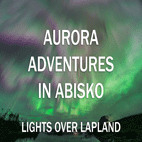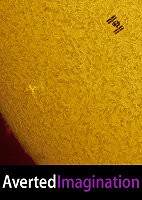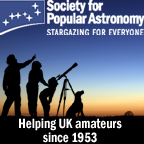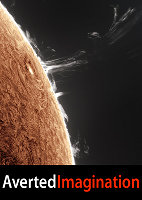|

Morocco Tours: Unleash your inner adventurer!





Learn how to use Excel
Best Promo Codes

Finding the best online casinos Australia can be challenging. That's why bestaucasinosites.com helps Australians by providing list of legit online casinos.
CasinoZonder | Nieuwe Casinos
Check out American casino online sites guide that offers the good welcome bonus
Compara y elige el mejor casino online España con las características que estás buscando

buy Instagram followers cheap at famousblast
Florida Car Accident Lawyer
ผู้ให้บริการเว็บสล็อตออนไลน์ได้เงินจริง เชื่อถือได้ เป็นสล็อตเว็บตรงที่ดีที่สุด
Casino forum bonus
Casino Top 10
rahapelit netissä
Suomen uutiset
buy instagram likes
Gotranscript.com - Professional transcription services online
UFABET is Best online casino in thailand
xoilac tv
https://inkedin.com/
Safe & Secure Gambling: Casinon Utan Svensk Licens with MGA & Curacao Licenses
Best online casino bonus deposit 2024
Wildz Casino offers the most complete list of casino games in the universe
Löydä parhaat kasinot kattavasta listauksesta ja vertaile.
Encuentra el mejor casino online de España en el comparador #1 del país.
* Encuentra tus casas de apuestas favoritas y consigue las mejores cuotas.
* Kokeile nettikasinoiden uutta kasinot ilman rekisteröitymistä trendiä Suomen parhaimmissa pelisivustoissa
Explore the best crypto casinos and sportsbooks
Find the best online casinos in the US for USA players by visiting casinous.com.
Sign up at King Johnnie online casino to play the best payout online casino games with the biggest rewards.
Play top-rated casino games via bestusacasinosites.com, it is one of the most popular hubs for exciting real money casino games.
Read latest casino reviews and casino games from an online casino Australia site, MyCasinoAdviser, one of Australia’s most trusted casino review sites.
rolex replica | best rolex replica
best rolex replica watches
For all the latest prop firms and forex related reviews, news and promos check out
Secrets to Trading 101.
Pokiesportal.com: Comprehensive guide to playing pokies and online casinos in Australia!
Pysy ajan tasalla suomalaisista uutisista SuomiTimes.com sivustolla
Register with the best casinos ohne oasis today
See the latest list of casinos online in Chile and find your favourite
日本で最高の合法オンラインカジノの推奨事項onlinecasinowiki.jp
Find the best crypto casinos online at Crypto-Casinos.com!
Get the latest no deposit bonuses at nodepositbonus.cc
Find Swedish unlicensed casinos at Casino-Utan-Svensk-Licens.com today!
Find unlicensed Swedish betting sites at Betting Utan Svensk Licens today!
Online Casino Guide
Passagen’s Guide on Utländska Casino
Compare the best casinos online in Peru at Casino24.pe
Discover the best Canadian casinos online and find your new favourite!
Find all emojis at: allemojisymbols.com

PRO guide to UK and EU casinos not on gamstop at gamblingpro.pro
Best guide to casinos not on gamstop UK 2021: Justuk.club
Get your slot game winnings paid at light speed with fast payout casino banking options, which you can only find at regulated casinos
Compare the best uudet nettikasinot in Finland - and find your favorite new casino!
At NettCasino you can find the best selection of Norwegian online casinos
Find a Norwegian online casino to play at by visiting Norgesspill!.
Reviews for the latest slot games and Boku casino sites: bokuslots.com
Compare Crypto Bots and Trading Bots: Forexadvies.com
Send your parcel cheaper with ParcelABC.com
Find the best licensed casinos in Romania on supercazino.ro
Online gambling in the USA is best experienced at OnlineGamblers
Compare Swedish casinos at CasinoUtanGränser which are all tax free.
Find the best replica bags currently on the market from the most reputable online store.
Find the best Pay N Play Casinos for you in Sweden
Visit the Realm of Casino Bonuses in CasinoLandia for daily updates of current bonus offers
日本のオンラインカジノ.com ではライセンス付きで安全なオンライン カジノだけを紹介しています.
Find best Nederlandse online casino sites at onlinecasinosspelen.com
With AAA Purse, you will always obtain beautiful 1:1 replica bags, which perfectly matches the real deal
find an agent Togel the best and official here

 . .
Blackjack.me
Discover the best online casino belgie and reach for the stars
kubet
Casino Fast Payout: fast payout casinos worldwide
No registration casino sites and valuable casino content
Compare online casinos in Sweden at Casivo.se.
Play Norges Automaten and other games at NorskeAutomater.com!
Play brand new casinos at NyeCasino.me
Winners play at Rickycasino! Check the best slot games at a casino online and get real money.

NonGamstopCasinos.net
Find the latest bonuses and promotions at Limitless casino
Find the best casinos not on gamstop at bestnongamstopcasinos.net
BuzzVoice is the best site to buy instagram likes from
xoilac tv
buy 1000 instagram followers from gpc.fm
Discover new Bitcoin casinos to play provably fair casino games.
btcasino.info provides all the information to find the best Bitcoin casinos
Cazinouri online – Top Casino Online in Romania
Vape.se
Submit Travel Guest Post at LivingFeeds
Tylko najlepsze nowe kasyna na stronie Polskie Sloty
At Casino Utan Svensk Licens, you will find the best gambling experience, with online casinos chosen for you!
Do you want to know how to find a lot of gambling games for free in Poland? Slotozilla will help you find casinos with free no deposit bonuses.
Spillsen teaches you everything about online casinos in Norway
When seeking a generous bonus, look at this new online casino with the best incentives.
Latest sports betting odds, casino games and slots: Falcon Vegas Casino.
Play the best online slots and casino games at Casimba.com in the UK!
Write For Us Blog By Coupotoaster
Tarkista Lumi kasino Suomen paras online-kasino
Play real money online casinos in the USA
Live dealer table: Blackjackcity casino.
Spelsson educates players about casinos in Sweden!
Find information about casinos without Swedish license: Spelpressen
Zimpler casino
Amazon Pro Publishing
Onlinecasinoxxl.com
Casinos in Japan: Online Casino Osusume JP
No deposit bonuses at thecasinowizard.com
Surf the biggest waves of wins at PokieSurf casino: https://pokiesurf-casino.online/!
Best online casinos for Finnish players: Kasinolinna.com
Casinos with spins : bookofdeadslotsites.com
El Paso social security disability lawyer
Best Betting Sites by sure.bet
sbobet | gclub | scr888.
Real Money online casino Canada . Want to enjoy the best real money gambling experience online?
Learn how to build Excel charts
MyStake Mirror - MyStake Entrez
bitcoin gambling
Offshore gambling sites with foreign licenses in Sweden: casinoutankonto.net.

Everything You Need to Know About Casinos, DFS and Online Sportbooks at Gamblerzz.
Read about new casinos without
Swedish license on Cision.
Fresh gambling news & casino reviews on Slotogate.com.

|